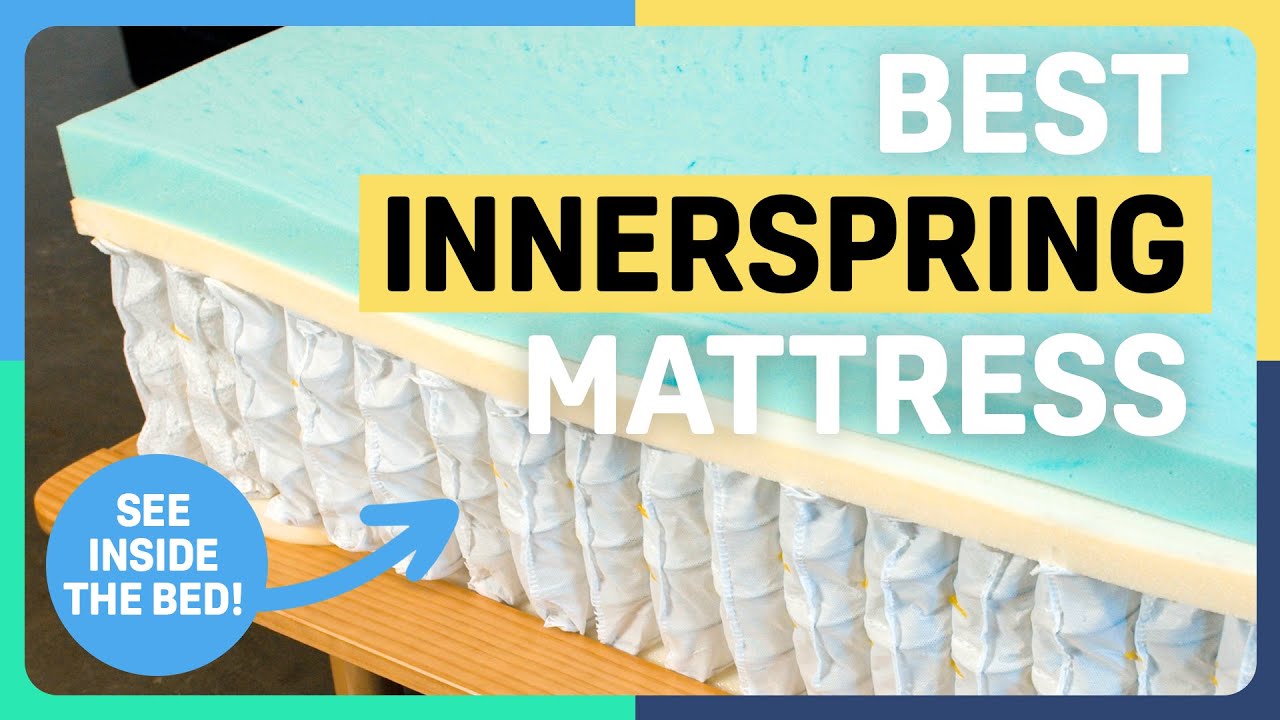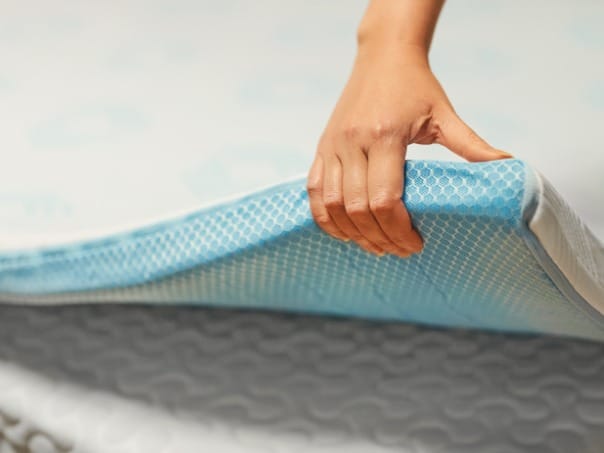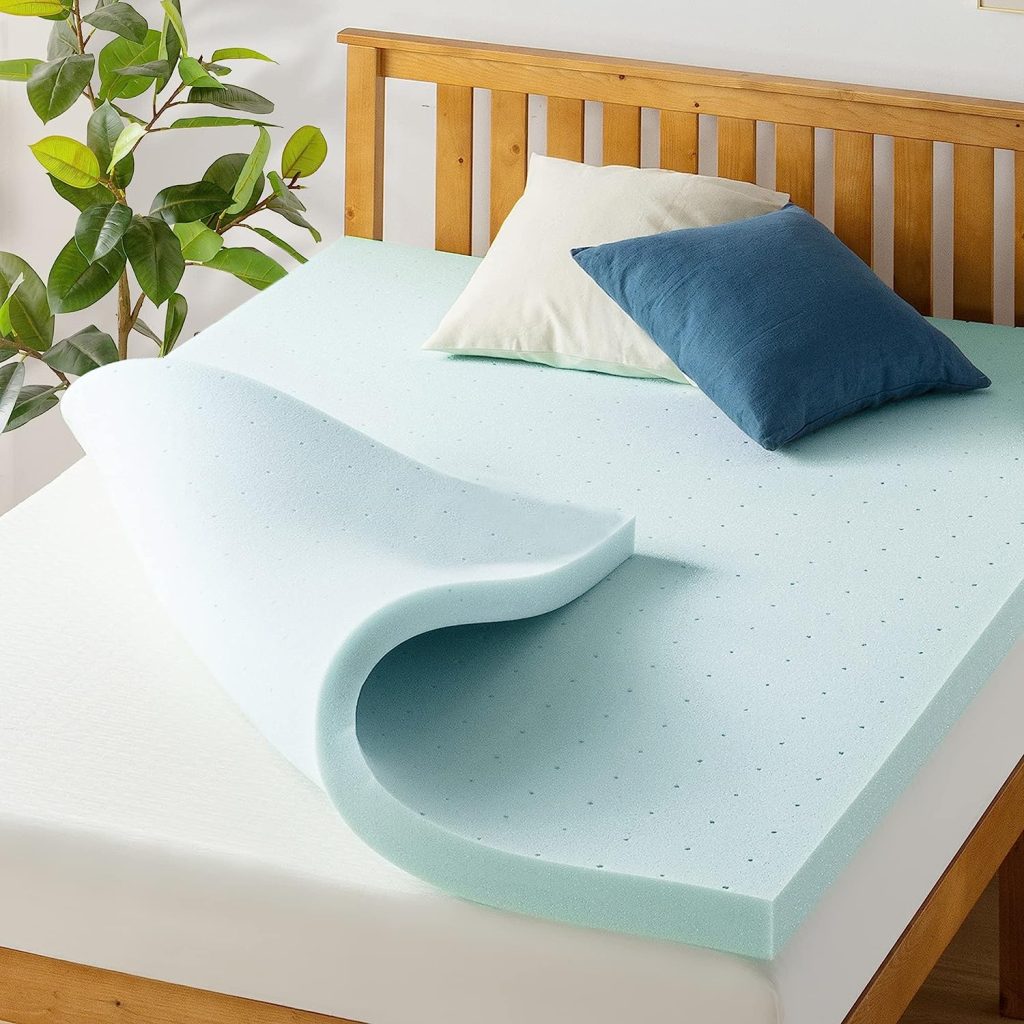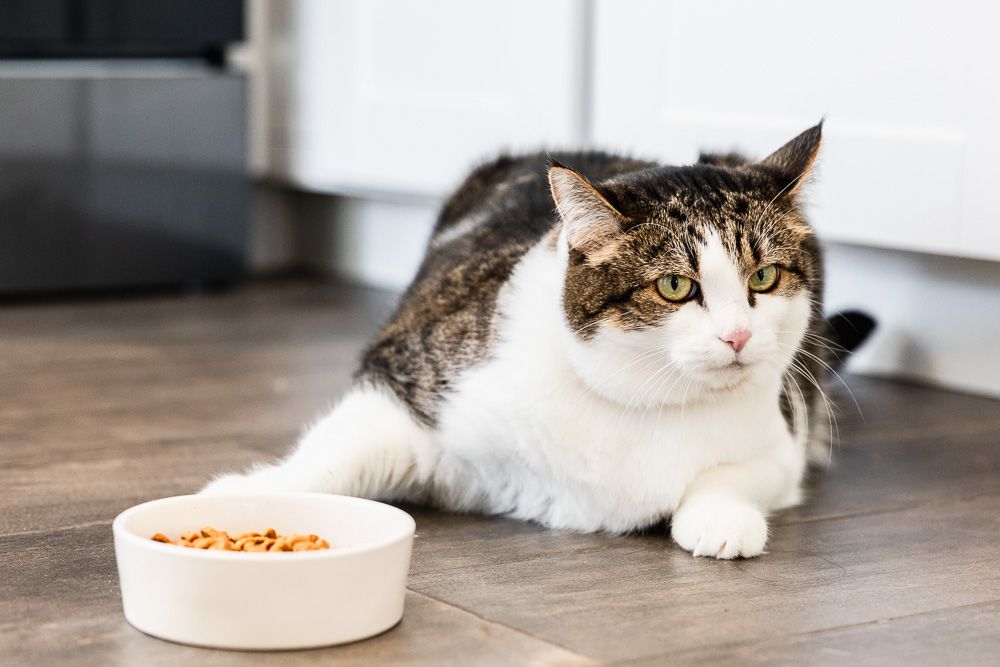
Innerspring mattresses
What is an Innerspring Mattress? Innerspring mattresses are the most traditional type of mattress and are still widely used today. They consist of a network of coils that provide support and stability. Innerspring mattresses are known for their breathable and cooling properties, which makes them a good choice for hot sleepers.
What is an Innerspring Mattress? An innerspring mattress is a type of mattress that uses a steel coil support system. These coils are typically wrapped in fabric or foam to provide cushioning and support. Innerspring mattresses are a popular choice for many people because they offer a balance of comfort and support at an affordable price point.
Some of the best mattresses we’ve picked
-
Best Classic Brand Mattress
-
Most Expensive Mattress
-
Best Mattress Under $500
-
Best Pocket Spring Mattress
-
Best Hybrid Mattress under $500
-
Best Luxurious Mattress
-
Top 10 Extra Soft Mattress
-
Top 10 Best Smart Mattress
-
Most Comfortable Bed in the World
-
Best Beautyrest Mattress
Memory Foam Mattresses

Memory foam mattresses are made from a viscoelastic material that conforms to your body shape, providing excellent pressure relief and support. They are known for their comfort and ability to isolate motion, making them a good choice for couples or those who share a bed. However, memory foam mattresses can retain heat and may not be suitable for hot sleepers.
Latex Mattresses

Latex mattresses are made from natural or synthetic rubber and are known for their durability, support, and comfort. They are hypoallergenic and resistant to dust mites and mold, making them a good choice for allergy sufferers. Latex mattresses are also known for their breathability and cooling properties, making them a good choice for hot sleepers. However, they can be expensive compared to other mattress types.
Click here to see some of the best-quality mattresses.
What is Innerspring?
An innerspring mattress is a type of mattress that has a support system made up of steel coils or springs. It is one of the most traditional and widely used mattress types on the market. The coils provide support to the body by adjusting and responding to the weight and pressure applied to them.
The construction of an innerspring mattress typically includes several layers. The core layer consists of the metal coils, which can vary in thickness, shape, and design. The coils can be individually wrapped (also known as pocket coils) or interconnected. Pocket coils are more responsive and can contour better to the body, while interconnected coils may have more motion transfer.
Mattresses with coil systems are known as innerspring systems. The bed’s framework was provided by the interconnected coils used in the construction of traditional innerspring mattresses. Some people have recently adopted the term “innerspring” to refer to more current pocket spring systems that are autonomous and provide more comfort.
Most people refer to conventional mattress designs as “innerspring” in general, and those who bought mattresses in the 20th century are particularly accustomed to these kinds of beds.
Despite the comfort layers of foam on the top, complaints of increased pressure points and pain have been reported despite the interconnected spring systems’ high levels of durability and support.
Click here to see some of the best-quality mattresses.
Difference Between an Innerspring Mattress and Other Mattresses?



What is an Innerspring Mattress? Innerspring mattresses have been the standard choice for much of modern mattress history, but their appeal has recently begun to wane as memory foam and hybrid mattresses become more widely available.
Innerspring mattresses are widely considered to be the most durable and supportive of all available mattress types. The mattress’s internal coil design provides adequate support, unlike memory foam or hybrid mattresses, which follow the contours of your body more closely.
It’s important to note that a memory foam mattress feels more firm than an innerspring mattress. The mattress is more responsive to your body position as you move during the night but less conforming than a memory foam mattress. Because of this, innerspring mattresses transmit motion more than memory foam mattresses.
However, there have also been a number of developments that have substantially enhanced the performance of innerspring beds. Instead of having the coils connected together, the industry has standardized on using pocketed coil systems. Coils that are individually wrapped can move separately, enabling higher conformability.
Not that memory foam and hybrid mattresses are bad—far from it. In reality, if given the right care (turning your mattress, using a mattress protector, etc.), many of these models may last just as long and be just as supportive as an innerspring mattress.
Innerspring Mattress
Construction
What is an Innerspring Mattress? An innerspring mattress is constructed with a support system of metal coils or springs that provide the foundation for the mattress. These coils are typically made from steel and are arranged in various configurations, such as Bonnell, offset, or pocketed coils.
On top of the support system, there are layers of padding and upholstery that provide comfort and cushioning. These layers can be made from materials such as foam, cotton, wool, or latex.
Benefits
-
Durability: Innerspring mattresses are known for their durability and long lifespan, making them a good investment for those who want a mattress that will last for years.
-
Support: The coil system in an innerspring mattress provides support for the body, helping to maintain proper alignment and reducing pressure points.
-
Cooling: Innerspring mattresses tend to sleep cooler than other types of mattresses, as the coils allow for better airflow and heat dissipation.
Types of Innerspring Coils

Innerspring mattresses come in a variety of varieties, each with its own special features and structure.
- The most common kind of innerspring mattress is the Bonnell Coil, which has an hourglass-shaped coil design for good support and sturdiness.
- Offset Coils: For better pressure relief, offset coils adhere more to the body and have an hourglass shape similar to Bonnell coils but with squared-off top and bottom edges.
- Continuous Coil: This type of support surface has a more solid and constant support surface since it only requires one piece of wire to construct a sequence of S-shaped coils.
- These individually wrapped coils, often referred to as wrapped or encased coils, move independently and offer more focused support with less motion transfer.
- Hybrid: A type of mattress that combines innerspring coils with other components like memory foam, latex, or gel to offer a combination of support and pressure relief.
Click here for more details on the mattress.
Innerspring Mattress Pros and Cons
What is an Innerspring Mattress? Innerspring mattresses, like all other mattresses, have some very distinct advantages and disadvantages. Here are some considerations when looking for a mattress and thinking about an innerspring:
Pros:

- Strong and stable support: Innerspring mattresses are renowned for their strong and solid support system, which can be advantageous for individuals who like a firmer feel or require additional support for their backs, hips, or shoulders.
- Cooling: Improved airflow and ventilation can help you stay cool while you sleep by encouraging improved airflow and ventilation.
- Durability: Innerspring mattresses typically last longer than other varieties, particularly if they are made well or have a high coil count.
- For sex-related activities or for individuals who like a more active feel, innerspring mattresses can offer a perceptible bounce and response.
Cons:

- Motion transmission: Innerspring mattresses are more likely than other mattress kinds to transfer motion across the surface of the bed, which could spook a sleeping companion.
- Innerspring mattresses may make noise, particularly if the coils are old or of poor quality, which might interfere with sleep.
- Limited pressure relief: Because innerspring mattresses’ coils can push back against the body, they may not offer enough pressure relief for some sleepers, particularly those who experience chronic discomfort or pressure points.
- Innerspring mattresses are prone to drooping and imprinting with time, particularly if they are of inferior quality or are not regularly maintained.
How Do Innerspring Mattresses Compare to Other Mattresses?
Innerspring vs Memory Foam
It’s similar to comparing apples and oranges when comparing innerspring and memory foam mattresses. Materials, functionality, and feel can all vary rather significantly. While memory foam mattresses employ foam layers to provide pressure relief and contouring, innerspring mattresses use metal coils for support.
While memory foam mattresses can offer superior pressure relief and conform to the curve of the body, innerspring mattresses often have more bounce and responsiveness. Memory foam mattresses are frequently quieter than innerspring mattresses and have a tendency to isolate motion better.
Click here to see some of the best-quality mattresses.
Innerspring

What is an Innerspring Mattress? Innerspring Mattresses:
- Construction: Innerspring mattresses have a core support system made up of steel coils or springs. These coils provide the primary support and structure for the mattress.
- Comfort and Support: Innerspring mattresses generally offer good support and firmness. The level of comfort and support can vary based on the number of coils and the gauge of the coils (thickness).
- Bounce and Responsiveness: Innerspring mattresses tend to be more bouncy and responsive. They quickly adapt to changes in body position and make it easier to move around on the bed.
- Cooling: The open structure of innerspring mattresses allows for better airflow, which can help dissipate heat and keep the bed cooler during sleep.
- Durability: The lifespan of innerspring mattresses can vary depending on the quality of the materials used, but they typically have a shorter lifespan compared to memory foam mattresses.
Memory Foam

Memory Foam Mattresses:
- Construction: Memory foam mattresses are made from viscoelastic foam, which conforms to the shape of your body when exposed to heat and pressure. This allows the mattress to contour and provide a personalized level of support.
- Comfort and Support: Memory foam mattresses are known for their pressure-relieving properties. They distribute body weight evenly and can alleviate pressure points, making them a good choice for people with joint or back pain.
- Motion Isolation: Memory foam excels at motion isolation, meaning that movement on one side of the bed is less likely to disturb the other person sleeping on the opposite side.
- Heat Retention: A common concern with memory foam is heat retention. Some traditional memory foams can trap body heat, potentially leading to discomfort for hot sleepers. However, advancements in technology have led to the development of gel-infused, open-cell, and other cooling memory foam variants to address this issue.
- Durability: High-quality memory foam mattresses can be durable and long-lasting, but low-quality ones may suffer from premature sagging or indentation.
Innerspring vs Latex
While latex mattresses employ layers of natural or synthetic latex foam for support and comfort, innerspring mattresses use metal coils. When contrasting the feel and performance of latex versus innerspring, there are certain similarities.
What is an Innerspring mattress, and what is a latex mattress? When it comes to performance, latex mattresses can deliver more pressure reduction while still offering a level of support comparable to innerspring beds. Although latex is typically more durable than innerspring mattresses, both latex and innerspring mattresses have the tendency to sleep colder than memory foam.
While latex mattresses are a fantastic alternative for people who require greater pressure relief, especially side sleepers or people with chronic pain, innerspring mattresses can be a suitable option for people who need more support or prefer a firmer feel.
Innerspring
Construction: Innerspring mattresses are built with a core of steel coils or springs, often with varying levels of firmness. These coils provide support and help distribute weight evenly.
Support and Comfort: Innerspring mattresses offer good support and can provide a bouncy feel, making it easier to move and change positions during sleep. However, the level of support and comfort can vary based on the quality and number of coils.
Motion Isolation: Innerspring mattresses might have some motion transfer, which means movements on one side of the bed can be felt on the other side. This could be a concern for couples or those who are easily disturbed by their partner’s movements during sleep.
Durability: The durability of innerspring mattresses can vary depending on the quality of the coils and materials used. Higher-quality innerspring mattresses tend to last longer, but they might still show signs of wear and tear over time.
Allergies and Sensitivities: Innerspring mattresses are less likely to cause allergies or sensitivities as they do not contain organic materials like latex.
Latex
Construction: Latex mattresses are made from natural latex (derived from rubber tree sap) or synthetic latex. They can be all-latex or have a combination of latex and other materials like foam.
Support and Comfort: Latex mattresses are known for their excellent support and pressure relief. They conform to the body’s contours, relieving pressure points and providing a more personalized and comfortable sleeping experience.
Motion Isolation: Latex mattresses generally have better motion isolation properties, meaning movements are less likely to be transferred across the bed. This can be beneficial for couples or those who share a bed.
Durability: Latex mattresses are known for their exceptional durability and longevity. A high-quality latex mattress can last for many years without significant sagging or loss of support.
Allergies and Sensitivities: Natural latex mattresses may be a better option for individuals with allergies or chemical sensitivities. However, some people might still have latex allergies, in which case they should opt for a latex-free mattress.
Innerspring vs Hybrid
Hybrid mattresses have layers of memory foam, latex, or gel in addition to innerspring coils. The main distinction between innerspring and hybrid mattresses is whether you prefer more support and bounce with innerspring or more pressure relief and cushioning with hybrid.
Depending on the exact materials utilized, hybrid mattresses may offer a combination of support and pressure relief. For people who need the pressure relief provided by memory foam or latex but want the stability of an innerspring mattress, they can be a decent compromise.
While hybrid mattresses are a wonderful option for people who need a balance of support and pressure relief or who prefer a softer feel, innerspring mattresses can be a suitable alternative for people who need extra support or want a firmer feel. Couples with differing sleeping habits may find hybrid mattresses to be a useful option because they can balance support and comfort.
Innerspring
- Construction: Innerspring mattresses are made up of steel coils or springs as the primary support system. These coils are typically covered with layers of padding or foam for comfort and insulation.
- Firmness and Support: Innerspring mattresses generally offer good support and responsiveness due to the coil structure. However, the level of support can vary depending on the coil type, gauge, and number of coils.
- Cooling: The coil design allows for good airflow, promoting better temperature regulation and keeping the mattress cool during sleep.
- Motion Isolation: Innerspring mattresses may not perform as well in isolating motion, meaning that movement on one side of the bed can be felt on the other side.
- Durability: The lifespan of an innerspring mattress is typically shorter than other types of mattresses, and over time, the coils may sag or lose support.
Hybrid
- Construction: Hybrid mattresses combine the support of innerspring coils with additional comfort layers, usually made of memory foam, latex, or other types of foam. The combination of materials aims to provide the benefits of both coil support and foam comfort.
- Firmness and Support: Hybrid mattresses offer a balance of support and pressure relief, and they often cater to various sleep positions and body types.
- Cooling: Like innerspring mattresses, hybrids generally have good airflow through the coil system, which helps with temperature regulation.
- Motion Isolation: Hybrid mattresses usually perform better in motion isolation than traditional innerspring mattresses due to the additional foam layers, which help absorb movement and prevent it from transferring across the bed.
- Durability: The use of high-quality materials can increase the durability of hybrid mattresses compared to some traditional innerspring mattresses.
Do Innerspring Mattresses Need a Box Spring?
What is an Innerspring Mattress? While an adequate foundation is needed to maintain the shape, durability, and stability of the innerspring mattress, a box spring is not always necessary.
If you decide to add an innerspring mattress and a box spring, make sure that the box spring is suitable for the mattress and is in good condition, so that there are no droppings or cracked slats. The mattress can benefit from additional support, height, and stress absorption from a box spring, but it is not always needed, and other types of foundation can be used in its place if necessary.
There are various foundations that can be utilized with an innerspring mattress, including box springs. Your innerspring mattress can be placed on a platform bed, slatted bed frame, adjustable bed frame, or any other flat and reliable surface. The important thing is to make sure the foundation is strong, level, and offers enough support for the mattress’s weight and structure.
FAQs
Are innerspring mattresses good?
Mattresses with innersprings are common and offer good support and bounce. For those seeking a firmer sensation, a high-quality innerspring can be a terrific option.
How much do innerspring mattresses cost?
Depending on how they are built and the materials used in their production, innerspring mattresses can cost anywhere from a few hundred to thousands of dollars. They are typically the least expensive kind of mattress.
Can you use an innerspring mattress on an adjustable base?
Any flat, sturdy platform, including an adjustable base, can be used with an innerspring mattress. If an innerspring mattress is being used with an adjustable base, the mattress should be placed directly on the base without a box spring in between.
Are innerspring mattresses toxic?
It relies on the materials that were utilized to build it. Your innerspring mattress might be nontoxic if it has natural latex layers or other materials like organic cotton or wool. For someone looking for the best organic and nontoxic mattresses, it might not be the ideal option if it has layers of foam and chemical fire retardants.





